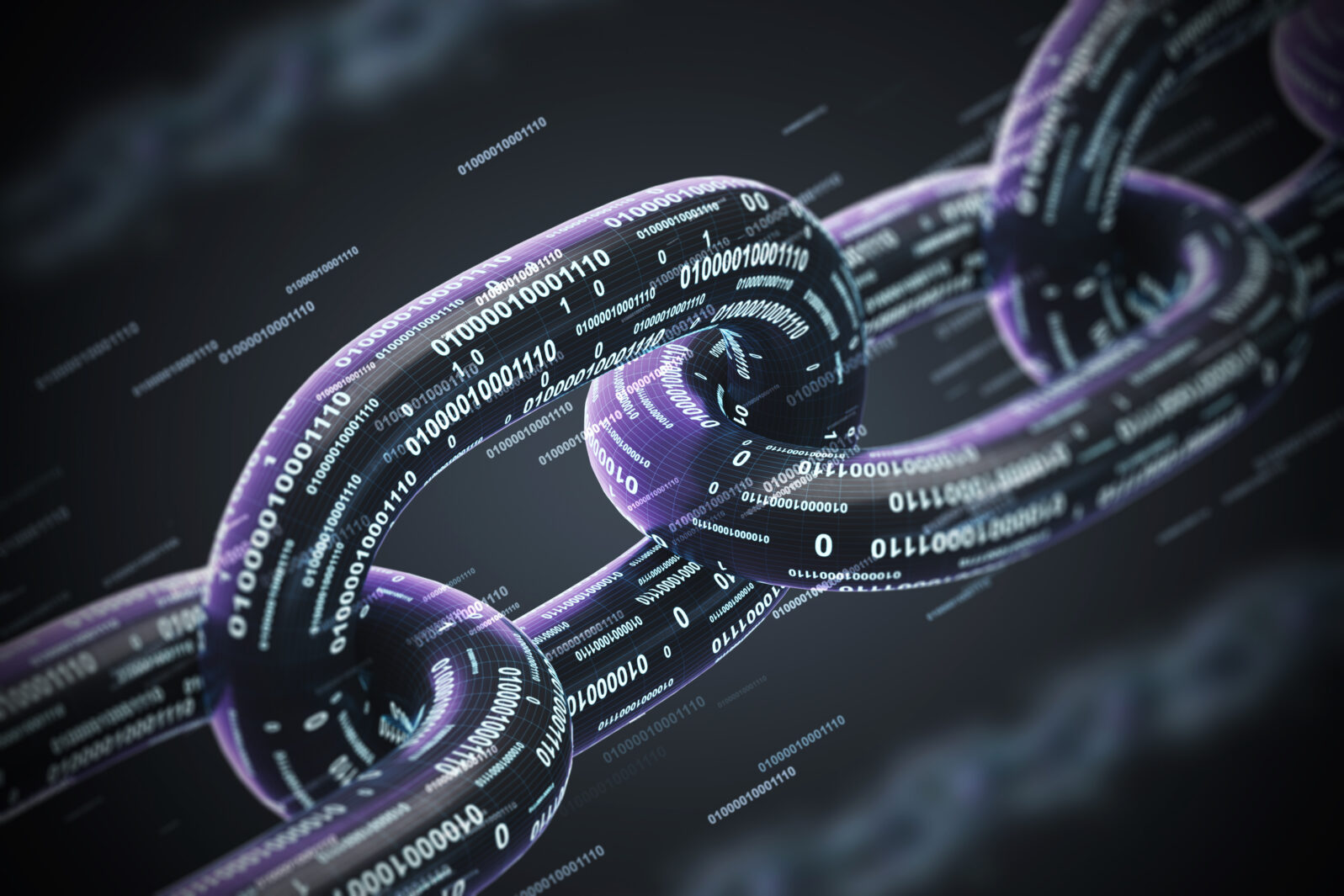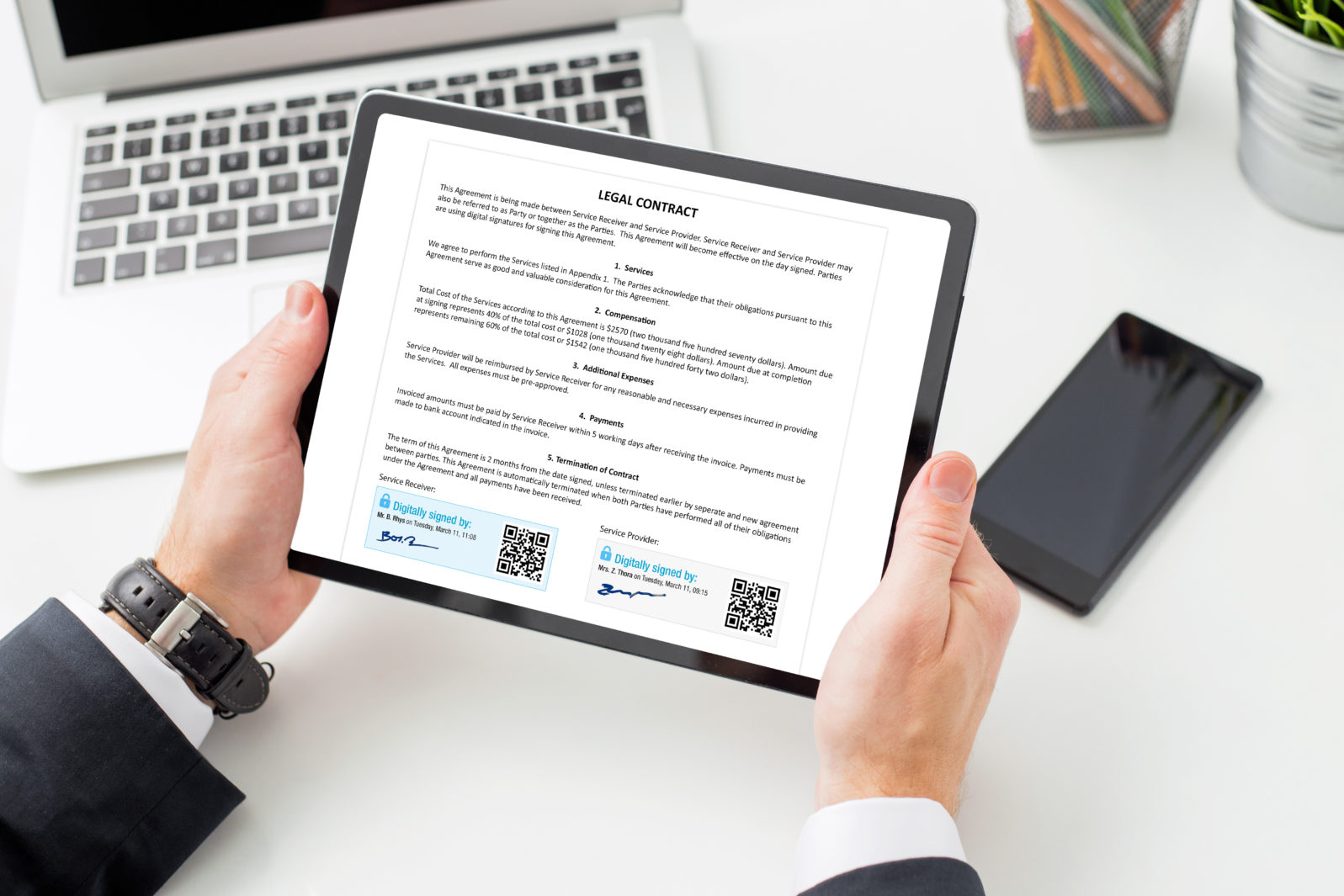Can Digital Signatures Protect NFTs in Digital Marketplaces?
The concept of owning an NFT on a blockchain is specific to the blockchain, with no legal force in society at largeIntroduction: At Expensivity, Bernard Fickser explains that a non-fungible token (NFT) is a unique token in cryptography that represents, say, real estate or art rather than money. Because the tokens have unique identities (non-fungible), they can be bought or sold while reducing the risk of fraud.
So how do they work?: The series is called How Non-Fungible Tokens Work: NFTs Explained, Debunked, and Legitimized (July 30, 2021). In Part 2, we look at digital signatures
2 Digital signatures in digital marketplaces
Of course, there’s more to the story. As already suggested, when someone buys a non-fungible token, they’re not simply buying a digital file of some collectible that can be readily copied. So what exactly are they buying? To understand what they’re buying, let’s consider a particular example. Specifically, let’s turn again to the NFT of Jack Dorsey’s first, or genesis, tweet, which he sold for $2.9 million and which currently ranks as the fifth most expensive NFT ever sold.
Dorsey’s genesis tweet on Twitter, is, like every other digital thing, a digital file. For convenience and ease of display, let’s take his genesis tweet to be the following digital file available here at Expensivity.com: https://www.expensivity.com/wp-content/uploads/2021/05/Dorsey-Twitter-NFT-orig.jpg. Because this is a jpeg file, it can be readily displayed as follows:

Now granted, Dorsey’s genesis tweet was not, at its inception, a jpeg file. It was some sort of Twitter file embedded in the Twitter database. Although he has access to this file, we don’t. Instead, we could focus on the characters that Dorsey punched in on his keyboard to create his genesis tweet. In that case, his tweet could be represented as a text file with a time and date stamp: “just setting up my twttr 2:50 PM Mar 21, 2006.” Any of these digital representations might do. They’re all equivalent for the purposes of transforming his genesis tweet into an NFT.
We now confront the obvious question: what is the magic alchemy that turns any old digital file like this into an NFT potentially worth millions of dollars? You’ve got the digital file that represents the item of interest in its full glory. Indeed, you’ll never find some missing or hidden aspect of that genesis tweet by probing deeper or even getting its author, Jack Dorsey, to reveal some hidden digital layer.
In answer then to the question about what turns any old digital file into an NFT, it is this: what’s needed additionally is a digital signature applied within a digital marketplace. To see what’s at stake with digital signatures, which is the key concept here, it helps to go back a generation or two when people and banks were much more comfortable in signing over checks to other people. I recall about forty years ago having a friend who worked with gang members in the inner city, trying to help them break free of drugs and violence. I happened to have a check that was made out to me when we met one night at church. Rather than cash it and give him the cash for his work with the gangs, I simply signed the check over to him by endorsing it on the back.
Given the signature on the back of the check, my friend was able to cash it, which he did. But if he wanted, he could have signed the back of the check under my name, and given the check to someone else, who could then have cashed it or else signed it to still someone else. Such signing of the check over to others could have continued until room on the check ran out. These days, checks have a horizontal line on the back and an explicit statement that nothing written below that line is valid. But back in the day, you could keep signing the check over to others, in effect turning it into a negotiable instrument.
Digital signatures on a blockchain work in the same way. The blockchain functions as a digital marketplace in which ownership of digital items is transferred from one party (usually called “Alice”) to another party (usually called “Bob”) by Alice applying a digital signature to it and designating Bob as the recipient (assign and sign: Alice is the assignator, Bob the assignee). In a blockchain-based digital marketplace, Alice, Bob, and any other commercial agents each use a public/private cryptographic key. The public key serves as the address to which digital items are assigned, the private key as the way to sign these digital items, authorizing their transfer from one party (or address) to another.

Thus, if Alice wants to sign a digital item over to Bob, she takes the digital item, attaches to it Bob’s address (from his public key), and then signs it with her private key. By signing with her private key, she authorizes the change in ownership of the digital item from herself to Bob, making clear to all members of the blockchain-based digital market that Bob now owns the digital item. And because the digital market is a blockchain, it is a secure, untamperable ledger that reliably records the transaction (at least it’s supposed to be secure; Bruce Schneier argues persuasively that the security of distributed peer-to-peer networks that run blockchains is less than ironclad).
In this account of digital signatures within a digital marketplace, there’s an interesting irony. Even though medium sized physical objects can never be perfectly copied, physical signatures that get attached to such physical objects can often be convincingly faked. Yet conversely, even though digital files of whatever size can be perfectly copied (error-correcting codes ensure faithful copying even for humongous files), cryptographic signatures can get attached to such digital files in ways that uniquely identify the signer and thus cannot be faked (except by a vastly improbable lucky guess of a private cryptographic key, a guess less likely to succeed than the sun failing to rise).
In this account of digital signatures within a digital marketplace, there’s an interesting disconnect between digital ownership and real ownership. When I own a physical item, often it’s close by me and transferring ownership simply means moving it from my hands into someone else’s hands. If it is particularly large, bulky, and valuable, such as a piece of property, transferring ownership will involve signing paperwork with an official recording office, thus ensuring that the transfer has the full endorsement and power of law behind it.
In a real marketplace, even if the property is intellectual property (such as a patent or copyright, whose form can be entirely digital), there will likewise need to be a contractual transfer of the rights to that intellectual property to a new party, with the transfer again having the full endorsement and power of law behind it. For instance, if in making an intellectual property purchase, I acquire the copyright to a picture, even a digital picture, the real market that operates in our society ensures that the transfer is subject to its laws and strictures. Through my purchase, I will own the picture in a real sense and can take legal action against anyone who tries to infringe on my copyright (such as by posting it on a blog without my permission).
By contrast, the concept of owning an NFT on a blockchain is specific to the blockchain with no legal force in the society at large. Suppose I snap a digital photo. Because I’m the one who snapped the photo, US law agrees that I own the copyright to it. Within the real marketplace of our society, I can sell the photo, license it, or just keep it. But suppose I decide to take it, as a digital file, upload it onto a blockchain, and then “sell” it to another party as a cryptographic transfer in a cryptocurrency that runs on that blockchain. This party signs over to me a certain amount of the cryptocurrency and I sign over to that party the digital file, all on the cryptocurrency’s blockchain.
Now answer this: in what sense did I “sell” the digital file? Within the marketplace of that blockchain, as a matter of convention, it could be said that I no longer own the digital photo and the other party now does. So in that sense I sold it. But such conventional reassignments of ownership within a blockchain ecosystem mean nothing as far as the real marketplace and real legal system of our society is concerned. I could, for instance, put that digital photo as an NFT on the Ethereum blockchain, get paid handsomely by you in Ether, and then, when you use that photo on your website, sue you and try to collect damages for copyright infringement.

Unless my signing over of the digital photo on the Ethereum blockchain is combined with a parallel signing over of actual copyright in the real marketplace of our society at large, all you can do is negotiate/trade this digital photo (i.e., NFT) on the blockchain where it was uploaded and signed over to you. So you’re in effect stuck on the blockchain where the NFT resides.
Perhaps laws will at some point be changed so that points of sale in the virtual marketplace of the Ethereum blockchain are treated as points of sale in the real marketplace of the society at large, conferring all the rights and guarantees of the real marketplace. But that’s not the case now, and there’s no prospect for that becoming the case anytime soon.
It’s time to wrap up the review of Jack Dorsey’s genesis tweet and its transformation into an NFT. Since that tweet was essentially a short text with a time and date stamp, there’s nothing here to copyright. Short texts other than poetry can be regarded as having educational value, and thus can be represented and copied at will with no copyright infringement, as a matter of what is called “fair use.”
Specifically, then, here’s what actually happened: Dorsey uploaded his genesis tweet onto the Valuables platform, which served as an auction house for it. The auction house then handed over Dorsey’s signed tweet to the highest bidder, namely, the Malaysian businessman Sina Estavi. The transaction was run over the Ethereum blockchain, with Estavi in early March 2021 paying 1630.5825601 ETH (about $2.9M at the time), 5 percent going to the Valuables platform as a commission and the remaining 95 percent going to Dorsey, who in turn gave his portion to people in Africa impacted by COVID-19.
Anyone besides Dorsey could have taken his genesis tweet and likewise put it up for auction on the Valuables platform or one equivalent to it. Anyone can still do this. Dorsey can do it again, putting his genesis tweet up for sale a second time. What if he did it a second time? Would the second signed version of his genesis tweet sell for a lot less than the first time around? Probably. Would putting it up again devalue the version that Estavi bought? Probably. While NFTs are new, the debasement of value by proliferating copies whose marginal value is close to zero has a long and ignominious history (compare the debasement or Roman coinage in the first centuries A.D.).
Here are all the parts of the series, 1 through 7:
Part 1: Cryptography: Are non-fungible tokens a scam? Or can they work? By Warren Buffett’s logic, if cryptocurrencies are rat poison squared, non-fungible tokens are rat poison to an infinite power. But is that all there is to be said about them? Blockchain technology allows for digital collectibles to be scarce even if they are replicable, thus creating value, like Jack Dorsey’s famous initial tweet.
Part 2: Can digital signatures protect NFTs in digital marketplaces? The concept of owning an NFT on a blockchain is specific to the blockchain with no legal force in society at large. While NFTs are new, the debasement of value by proliferating copies whose marginal value is close to zero has a long and ignominious history.
Part 3: How to create non-fungible tokens (NFTs), simplified. While still deeply skeptical of what ownership of an NFT really means at present, Fickser decided to experiment with creating, buying, and selling NFTs. Bernard Fickser offers a step-by-step explanation, offering an original montage of the Democratic primary in Iowa in 2007 for sale as an illustration.
Part 4: NFTs: You bought one. But do you really own it? Could you ever? Right now, the non-fungible tokens markets leave a lot to be desired as a business proposition, Bernard Fickser explains why. The current NFT regime features no limit on proliferation, no guarantee of scarcity, and terms that disclaim any accountability on the part of the NFT market.
Part 5: In the digital world, what does “scarcity” mean? For a digital artwork like Beetle’s Everydays, which sold for over $69 million, a number of methods are used to prevent copying, thus ensuring uniqueness. Three methods used to ensure uniqueness include partial availability (for fair use), digital marking, and algorithmic immutability (like blockchain).
Part 6: What makes NFTs valuable? What does it mean to own one? In the case of non-fungible tokens (NFTs) on the Ethereum blockchain, actual ownership with legal standing is never in fact transferred for the underlying digital file. Bernard Fickser points out that the NFT literature is filled with equivocations about the meaning of the word “own” as it relates to NFTs.
Part 7: How can non-fungible tokens (NFTs) be made to work better? Bernard Fickser offers twelve steps to handling NFTs in a way that dispenses with cryptocurrency-based blockchains and works in ordinary online marketplaces like eBay. In Fickser’s view, NFTs can work if they avoid self-serving cryptocurrency blockchains like Ethereum and enable real-world legal transfers of ownership.
Also: Jonathan Bartlett’s response: Blockchains have NFTs unnecessarily tied down. New ideas propose severing the accidental relationship between NFTs and blockchains. For NFTs, the blockchain is actually reducing the value of the NFT, as it introduces additional dependencies and costs for maintaining NFTs
